Style
13 Hidden Risks of Sleeping in a Chair – Must Know
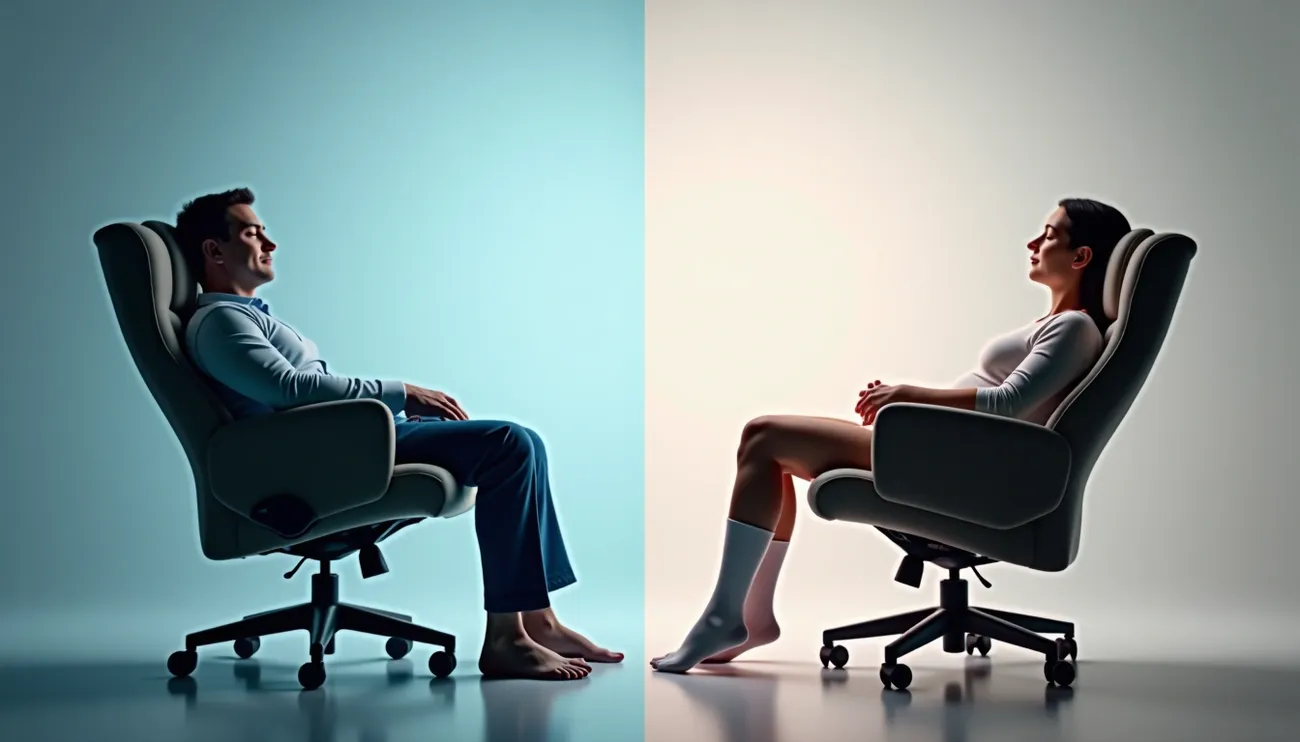 Sleeping in chair can help people with acid reflux or sleep apnea, and research backs this up. Research shows 65% of people slept better after raising their heads. A recliner at a 30-degree angle reduced sleep apnea episodes by almost two-thirds.
Sleeping in chair can help people with acid reflux or sleep apnea, and research backs this up. Research shows 65% of people slept better after raising their heads. A recliner at a 30-degree angle reduced sleep apnea episodes by almost two-thirds.
The reclining position provides real benefits for certain health conditions. Your mattress shouldn’t be replaced with a La-Z-Boy just yet though. We need to discuss some hidden risks of this sleeping arrangement. Recliners might improve circulation and breathing, but people often miss some serious dangers. Your feet could swell and joints might become stiff when you sleep in a chair. Sleep position directly impacts your spine’s alignment, blood flow, and breathing patterns. These factors play a vital role in your health. This piece compares different sleeping surfaces – beds, chairs, sofas, and recliners to help you pick the safest option for your nightly rest.
Restricted Blood Circulation
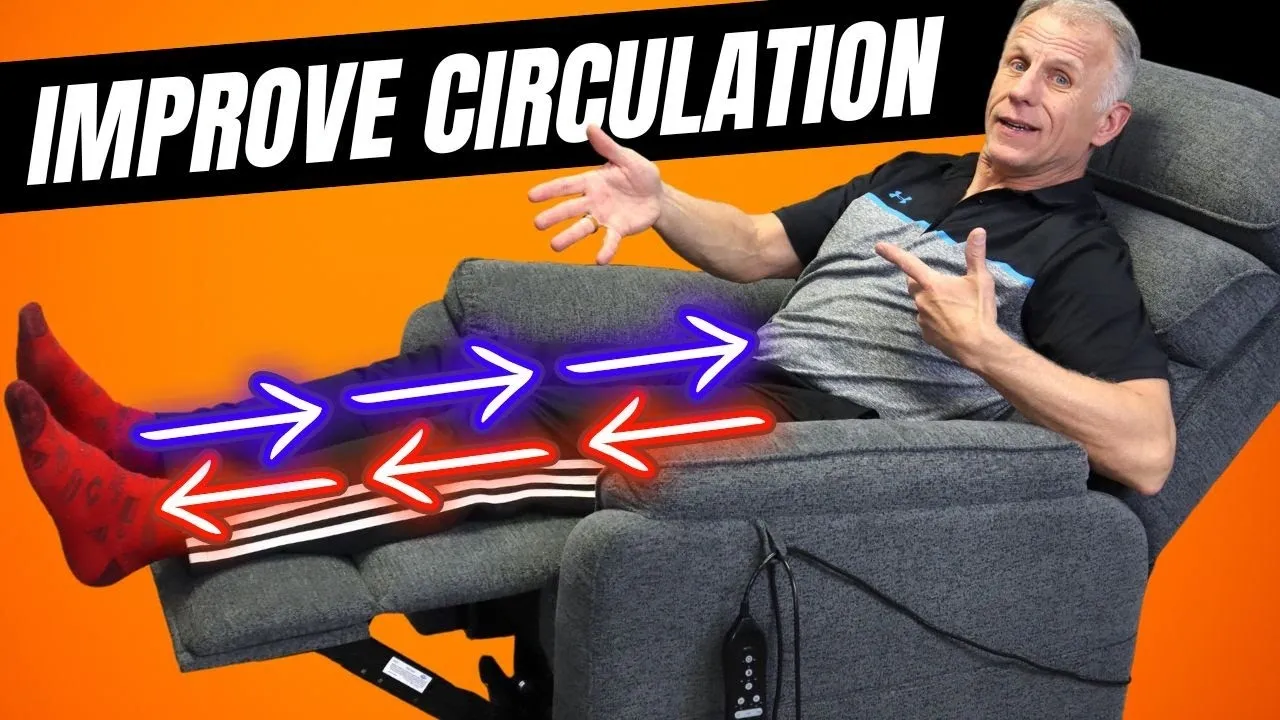
Image Source: YouTube
People who sleep in chairs for long periods keep their legs bent at the knees. This creates a dangerous situation for blood vessels. The position puts pressure on the popliteal artery behind your knee and restricts blood flow to your lower legs [1]. Your body works better with gravity when you sleep flat in bed. The reclining position makes it harder for your heart to pump blood to your legs [1].
What is restricted blood circulation in chair sleep?
Blood doesn’t flow naturally through your body in a seated position. Your knees stay bent for hours at the time you sleep in a chair, which compresses blood vessels in your lower body. Your chest cavity also gets slightly compressed in a reclined position, which throws off your body’s natural alignment [1]. These compressions create ideal conditions for circulation problems. Blood pools in your veins instead of flowing back to your heart efficiently.
A bed or sofa lets you stretch your legs fully, but chair sleeping keeps your joints bent all night. Recliners that raise your legs while keeping knees bent might make things worse. They can increase the chances of blood pooling in certain spots.
Why restricted circulation matters
Poor circulation can be dangerous, not just uncomfortable. These symptoms show up right away:
- Muscle pain or weakness
- Tingling sensations or “pins and needles”
- Skin looks pale, blue, or unusually red
- Swollen legs or cold feet
- Numb extremities [2]
The risk of deep vein thrombosis (DVT) is even more serious. This condition happens when blood clots form in deep veins, usually in legs [1]. These clots can break loose and travel to lungs or heart. This leads to life-threatening complications like pulmonary embolism [1].
Sleeping in chairs for extended periods can also cause chronic venous insufficiency (CVI). The valves in leg veins stop working well, which makes it hard for blood to return to the heart [2].
How to prevent circulation issues while sleeping in a chair
You should take these protective steps if you need to sleep in a chair:
Get everything ready for comfort before you settle in to avoid unnecessary movement [1]. Compression socks help prevent blood from pooling in feet [1]. Studies show that reclining your seat at least 40 degrees works better than a more upright 20-degree angle for healthier sleep [3].
Stretch your legs during short breaks if you wake up at night. This helps blood flow better. Good hydration supports healthy circulation [2]. Keeping legs uncrossed helps maintain proper blood flow [3].
A bed offers the healthiest option for circulation. It lets your legs stretch properly and blood flow naturally [1].
Increased Risk of Deep Vein Thrombosis (DVT)
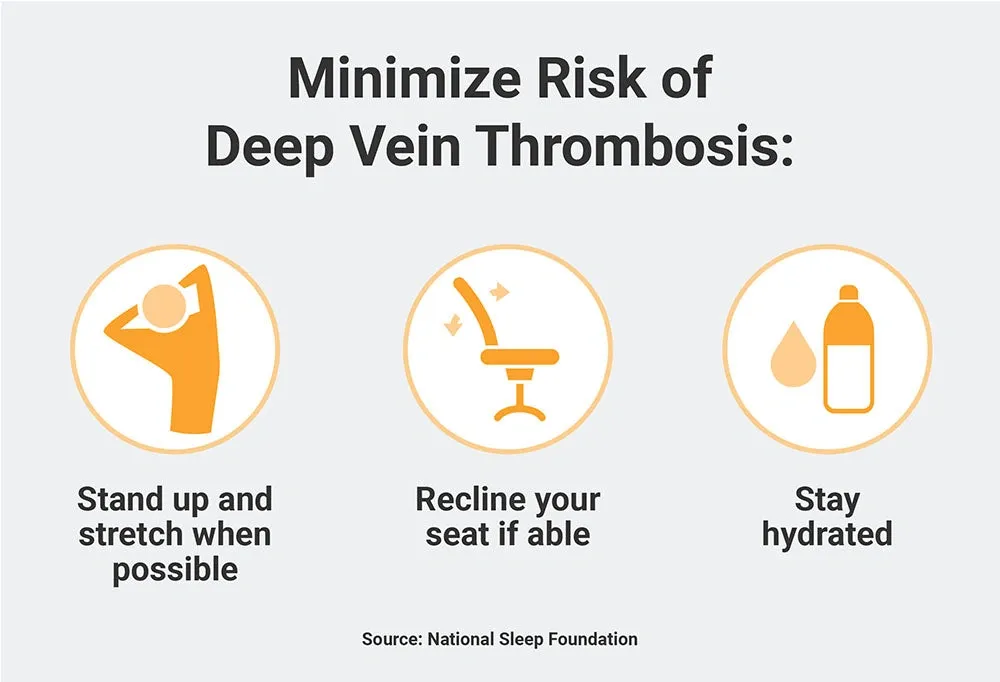
Image Source: Medcline Europe
Deep vein thrombosis (DVT) ranks among the most dangerous effects of sleeping in a chair regularly. This life-threatening condition affects 1 to 3 out of every 1,000 adults yearly in the United States. DVT-related complications claim up to 300,000 lives annually [4].
What is DVT from sleeping in a chair?
Blood clots form in deep veins and cause DVT, usually in the legs. Your risk goes up by a lot when you sleep in a chair because the bent knee position can block the popliteal artery—the main blood vessel behind your knee [5]. Research shows this blockage happens to about 30% of people with extended knees [5]. The sitting position makes this even more common.
We naturally change positions throughout the night in bed. Chair sleeping keeps us still for hours. So blood circulation slows down, which lets blood pool and possibly clot in the legs [6]. Recliners that raise legs but keep knees bent can make things worse by restricting blood flow even more.
Why DVT is dangerous
DVT’s danger goes beyond the original clot formation. These clots can break loose and travel through your bloodstream to your lungs. This creates a pulmonary embolism—a life-threatening emergency [4]. 1 in 10 Americans diagnosed with DVT don’t survive these complications [7].
DVT can cause post-thrombotic syndrome even if the clot stays put. This leads to leg pain and swelling that might last for months or years [4]. The syndrome happens because of damage to your vein’s valves, which causes:
- Chronic leg swelling
- Increased pressure within veins
- Skin discoloration
- Venous stasis ulcers
How to reduce DVT risk in a reclining position
You should avoid staying in one position too long. People who must sleep in recliners should try to move every 2 hours [7]. Lying flat with slightly raised legs helps your circulation more than sitting up [6].
Compression socks work well, especially when you have poor circulation. They stop blood from pooling in your feet [8]. Staying hydrated matters just as much since dehydration makes your blood thicker and more likely to clot [6].
Regular leg exercises become a vital part of prevention for high-risk people (over 60, obesity, or those taking hormone medications). Simple ankle rotations and calf stretches while seated help keep blood flowing [4].
A proper bed offers the safest option compared to chairs, recliners, or sofas. Your body moves more naturally and maintains better blood circulation throughout the night.
Joint Stiffness and Muscle Tightness
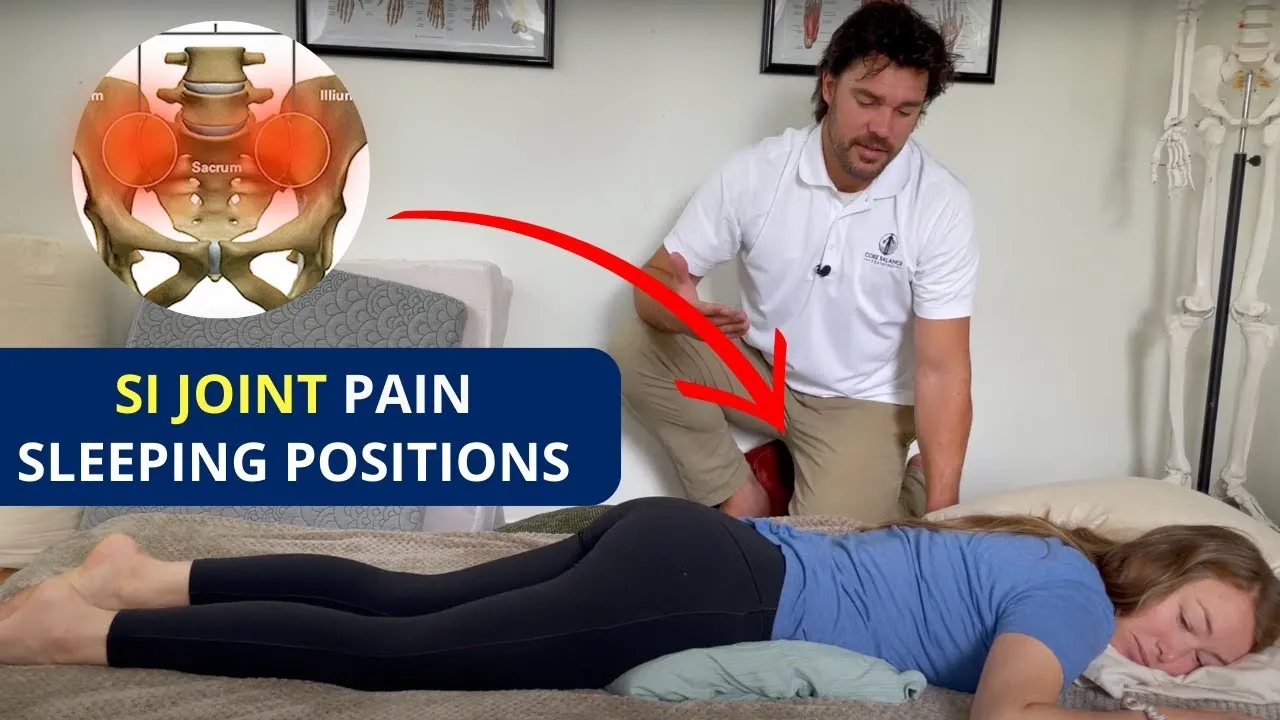
Image Source: Back Muscle Solutions
Joint stiffness ranks among the most common complaints from people who sleep regularly in chairs. A bed lets you move naturally throughout the night, but sleeping upright forces your body to stay fixed for hours. Your joints and muscles face unexpected problems that become apparent only after waking up.
How sleeping in a chair causes joint stiffness
Your knees and hips stay bent all night while sleeping in a recliner, which guides tight hips, calves, and hamstrings [2]. Natural movement that happens during normal bed sleep stops completely. Your body’s repair processes suffer because healing agents can’t properly fix areas that need attention during deep sleep [9].
The stiffness gets worse because fluid accumulates around your joints during periods of no movement, which triggers swelling and inflammation [10]. Your cells release cytokines (small proteins that activate your immune system) at night and that can spark inflammation and make joint pain worse [10].
Why joint health suffers
Joint health typically deteriorates from long-term chair sleeping. The original fixed position through the night adds to pain since joints swell more without movement [10]. Motion helps lubricate joints and keeps fluids moving properly.
Spine and neck alignment becomes an issue when you sleep with a twisted neck, which happens often in chair sleeping and can make neck pain worse [10]. Poor alignment affects your posture as time passes and that might create chronic problems [2].
Joint stiffness hits older adults harder as their cartilage naturally wears down with age [9]. Sleeping in awkward positions puts extra stress on joints and speeds up wear and tear.
Tips to stay flexible while sleeping in a recliner
These approaches can help minimize joint stiffness if you need to sleep in a chair:
- Wake up every couple hours to stretch and shift position [11]
- Support your neck and lower back with well-placed pillows [2]
- Do gentle morning stretches before getting up—try ankle circles, wrist rotations, and knee bends [9]
- Try wearing compression socks to stop fluid buildup [2]
- Cover leather recliners with a sheet to avoid sweating and discomfort [2]
A supportive bed remains the healthiest choice for joint health. In spite of that, these preventive steps can help keep you flexible and reduce morning stiffness when a recliner becomes necessary.
Poor Posture and Spinal Misalignment
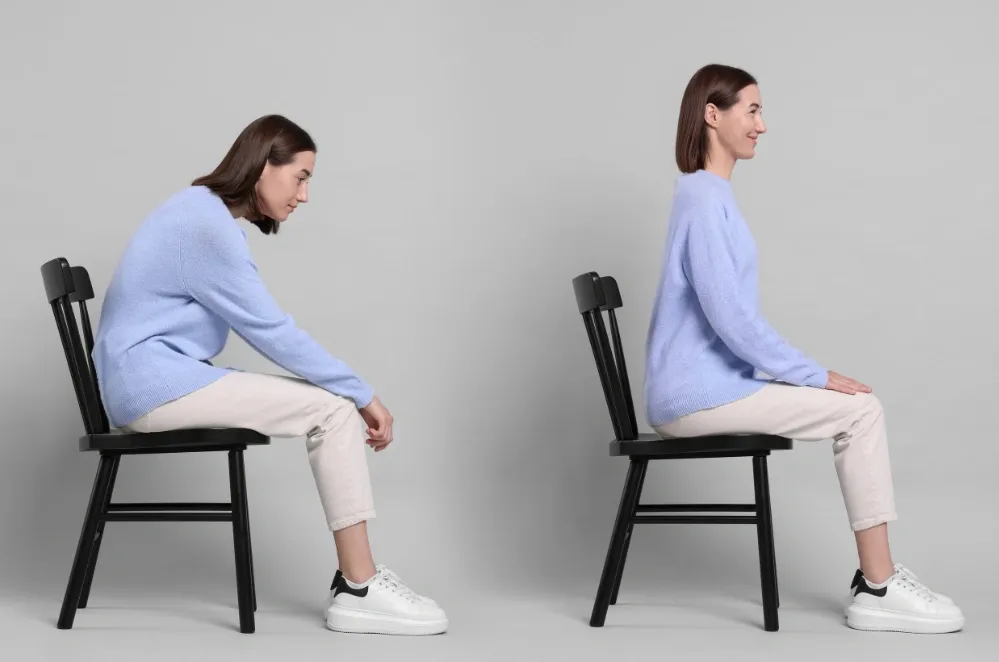
Image Source: Advanced Spine & Sports Care
Sleeping in a chair puts unnatural pressure on your spine and forces it away from its best position. The spine naturally forms an S-shape curve, but most chairs—even recliners—don’t support this vital anatomical feature well [12]. Your spine’s wrong position can cause immediate discomfort and serious potential risks.
How chair sleeping affects posture
We found that recliners move your head forward and strain your neck muscles and upper spine [13]. This wrong position often results in morning headaches and constant neck pain. Most chairs create a gap between your lower back and the seat. Your back muscles work extra hard all night because of this gap [13].
Beds let you move naturally, but chairs limit how you can move your body [14]. You end up slouching or leaning sideways, which throws your spine more out of balance [13]. The headrest design in most recliners makes things worse by pushing your head forward unnaturally [13].
Why spinal alignment is critical
Good spinal alignment keeps the natural S-curve of your spine, which helps maintain overall health [15]. Your body weight spreads evenly when aligned properly. This reduces pressure on each vertebra and lets your muscles relax.
Bad alignment from chair sleeping starts a chain reaction in your body. Your upper back might become hunched and block air from reaching your lungs [3]. This position puts extra strain on your shoulders, neck, and lower back. The discomfort gets worse over time [16].
Poor sleeping posture leads to chronic back pain, worse sleep quality, and reduced movement [16]. Research published in the Journal of Back and Musculoskeletal Rehabilitation shows that bad sitting posture associates with poor sleep quality [16].
Posture-friendly tips for recliner sleep
If you need to sleep in a recliner, try these ways to protect your spine:
- Set your recliner between 30-45 degrees—not too flat or upright [13]
- Put a supportive pillow behind your lower back to keep your spine’s natural curve [3]
- Make sure your head, neck, and spine line up straight [13]
- Rest your shoulders against the backrest without hunching forward [13]
- Change positions every few hours using a timer [12]
Beds provide better spinal support than chairs or sofas. However, well-designed recliners with proper lumbar support can help people recovering from specific surgeries [17]. The recliner’s quality makes a big difference. Look for designs that offer steady back support, a well-placed headrest, and good cushioning [18].
Neck and Shoulder Strain
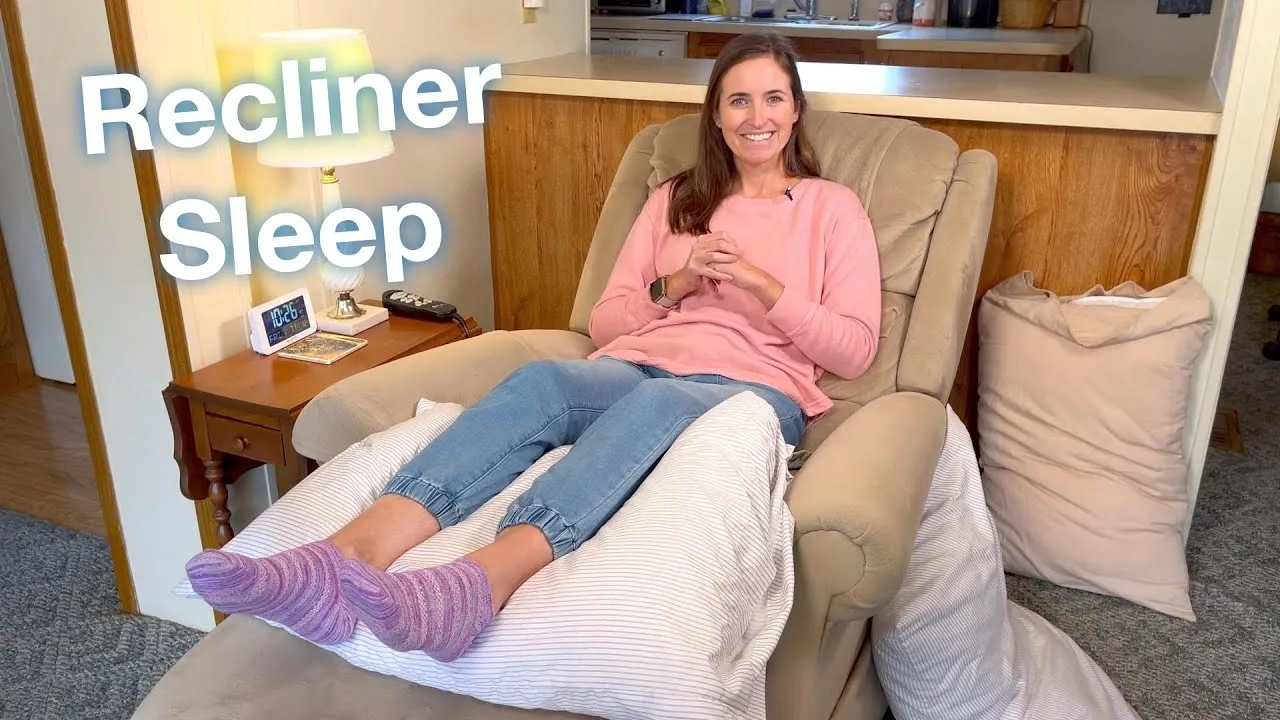
Image Source: EquipMeOT
Your neck muscles take a beating when you doze off in a chair. Research shows that sleeping upright forces your neck into an unnatural forward curve. This creates both immediate pain and lasting problems.
Why neck pain is common in chair sleepers
Chair sleepers often complain about persistent neck pain and stiffness [1]. The biggest problem lies in how most recliners push your head forward awkwardly. This position feels much like sleeping on a couch with a pillow that flexes your head forward [1]. The position might feel fine at first, but your neck muscles strain as they hold this unnatural pose.
Picture holding a weight with your arm stretched out – it’s comfortable for a few minutes but becomes painful quickly [1]. Your neck stays properly lined up when you sleep in bed. Chair sleeping pushes your head forward into that “chin-ahead-of-chest” position, and neck problems follow naturally [19].
How to support your neck properly
You can reduce neck strain while sleeping in a recliner:
- Roll a hand towel tightly and secure it with rubber bands. Place it behind your neck to support its natural curve [1]
- Skip thick pillows that push your head forward. Use thin support instead [19]
- A travel or neck pillow that wraps around works well to keep your head stable [19]
Daily neck exercises help keep your neck flexible and ready to handle different sleeping positions [1]. Ice works well to reduce inflammation if you wake up with pain [1].
Best pillows for recliner sleeping
Wedge pillows excel at recliner sleeping because they help achieve proper spinal alignment and take pressure off your neck and shoulders [5]. People dealing with chronic neck pain should look into memory foam wedge pillows that mold to their body shape [5].
These pillows serve perfectly for reading or watching TV in bed without stacking multiple regular pillows [5]. They also stay put better than normal pillows, so you won’t need to keep adjusting them [5].
Bed sleeping lets feather or memory foam pillows cradle your head for neutral spine alignment [20]. Recliner sleeping needs special support to protect your neck from strain.
Disrupted Sleep Cycles

Image Source: Vivid Care
Sleep quality depends on cycling through different stages naturally. Sleeping in a chair can disrupt this vital rhythm. Research shows that chair sleeping guides you toward fragmented sleep patterns that affect your wellbeing.
How chair sleeping affects REM and deep sleep
Your body doesn’t deal very well with sleeping upright because muscle tone changes during sleep cycles [21]. Temporary muscle paralysis during REM sleep makes upright positions uncomfortable [17]. Research reveals that sleepiness increases when people sleep in reclined seats (60° recline) compared to flatter positions (87° recline) [22]. Chair sleepers wake up more frequently after falling asleep [22], which interrupts significant deep sleep stages.
Why sleep quality matters
Getting proper REM (rapid eye movement) sleep is a vital part of dreaming, memory consolidation, and learning [14]. Your mental health and immune system become compromised without adequate REM sleep [8]. You might be “resting” in a chair, but your brain may not consistently reach deep sleep stages [8]. This leaves you with cognitive fog, poor memory, and mood changes the next day.
Improving sleep cycles in a recliner
To optimize sleep quality in a recliner:
- Your seat should recline at least 40 degrees instead of a more upright 20-degree angle [17]
- Think over recliners with gentle rocking motions – research shows they can increase deep sleep duration [21]
- A consistent sleep schedule reinforces your body’s natural circadian rhythm [23]
- Your brain produces melatonin naturally when you avoid screens before bedtime [23]
Worsening of Sleep Apnea in Some Cases
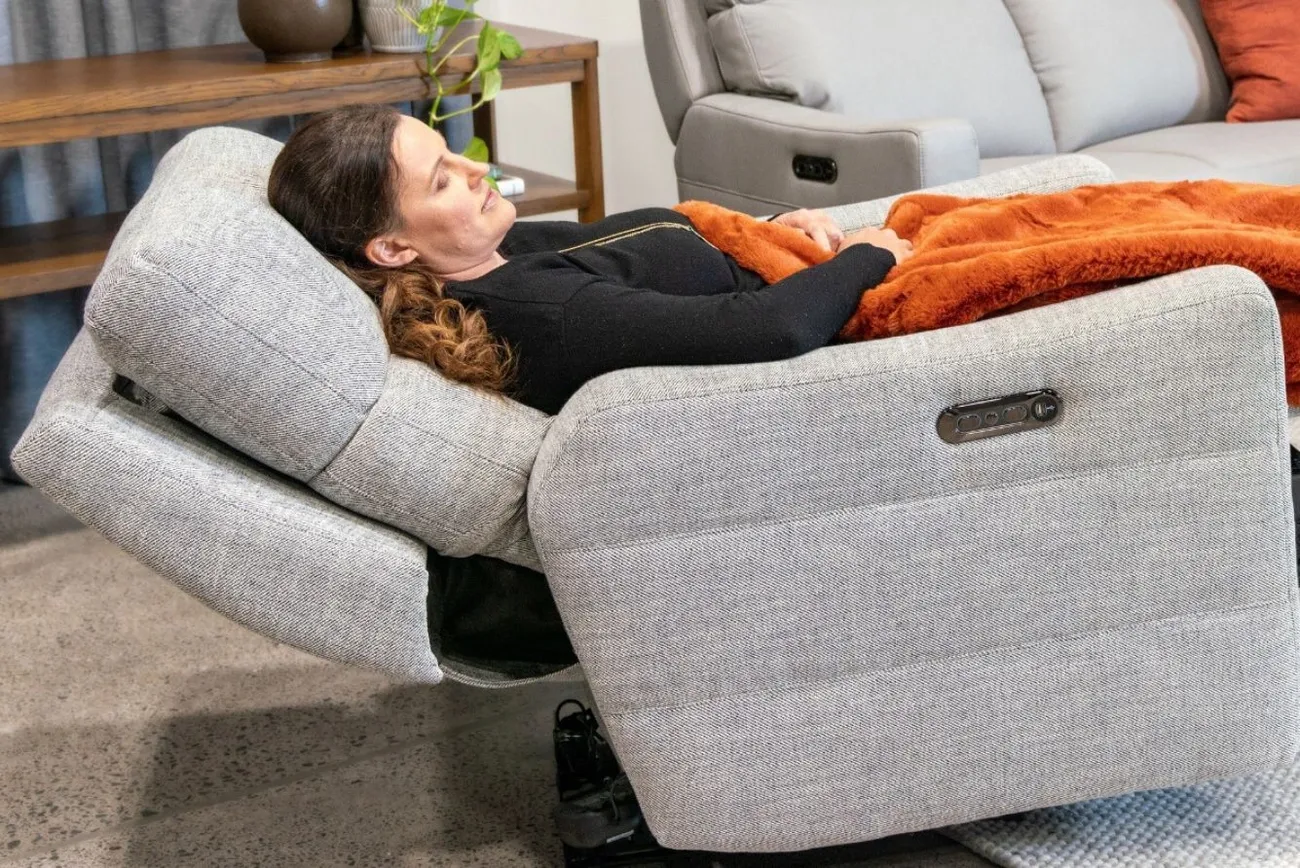
Image Source: La-Z-Boy
People with sleep apnea face a complex situation about sleeping in chairs. Research shows mixed results that depend on sleeping positions and personal conditions.
How recliners can both help and hurt sleep apnea
The right reclining angles can improve obstructive sleep apnea symptoms. A study from the University of São Paulo Medical School discovered that sleeping at a 7.5-degree tilt reduced sleep apnea episodes and severity by 30% [24]. Research also shows a 30-degree incline can cut sleep apnea events by nearly two-thirds [25].
The irony lies in upright sleeping that might worsen breathing issues. This position makes it harder for gravity to pull down tissues and fluids that could block breathing, which increases sleep apnea episodes [26].
When recliner sleep becomes risky
Sleeping in chairs turns dangerous if your head tilts forward or your chest gets compressed in the tilted position [7]. The upper airway narrows and blocks airflow, which makes breathing problems worse [7].
Long-term recliner use often results in poor sleep quality for people with apnea [6]. Recliner sleeping should not replace proper sleep apnea treatment [27].
Safe angles for sleep apnea relief
The right angle is vital. Research points to angles between 7.5 degrees [24] and 30-60 degrees as most effective [28]. Beds give better support than chairs or sofas, but a well-adjusted recliner can help temporarily with some conditions [24].
Impaired Lung Function Over Time

Image Source: Homebody
People who regularly sleep sitting up experience gradual deterioration in their lung function. Studies reveal that sleeping upright restricts your rib’s natural movement and reduces your lung’s ability to expand fully [29].
How upright sleeping affects breathing
Sleeping in a recliner changes your breathing mechanics at a fundamental level. Your diaphragm can’t move down properly, which limits deep breathing. A flat sleeping position lets your chest expand completely in all directions [30]. Your body has to work harder to maintain oxygen levels through the night, and you might wake up feeling completely drained.
Why lung capacity may decrease
Reduced lung expansion can weaken your respiratory muscles over time [29]. This weakness guides you toward decreased lung capacity—especially when you have existing respiratory conditions. Fluid distribution changes occur during chair sleeping, and blood might pool in your lungs [3]. This creates extra pressure that makes breathing harder.
Breathing tips for recliner users
Recliner sleeping presents challenges, but you can reduce respiratory effects by:
- Setting your recliner between 30-45 degrees instead of fully upright
- Supporting your sides with pillows to help your chest expand better
- Taking deep breaths before you drift off to sleep
- Keeping thick blankets away to allow chest movement
These adjustments help during temporary recliner use. Your lung function gets the best support when you eventually return to sleeping in bed.
Increased Risk of Sliding or Falling

Image Source: Healthline
Falling from a recliner creates a serious safety risk that many people ignore. Falls from chairs put needless strain on patients, their families, and healthcare budgets when treating these preventable injuries [31].
Why recliners can be unstable during sleep
Manufacturers didn’t design most recliners for overnight sleep. This creates a risk of sliding down or falling off when people enter deeper sleep cycles [32]. People with tight calves and hamstrings face higher risks since stiff muscles from sleeping with bent knees lead to instability when they wake up [4]. Medications causing dizziness might increase someone’s chance of falling [31]. People with cognitive issues sometimes try to stand up while they’re still half-asleep [31].
How to prevent sliding or falling
Chairs with tilt-in-space functions physically tilt you back and make it harder to slip forward, which reduces sliding risks [33]. Footplates add another physical barrier that stops falls [33]. The chair’s fit plays a vital role—it shouldn’t be too big, small, hard, soft, wide, shallow, high, or low [34].
Safety tips for elderly recliner users
Older adults stay safer in chairs that have proper positioning features [35]:
- Choose power lift recliners that have stable bases and secure locking mechanisms
- Keep water, phone, and remote within easy reach
- Look for chairs with 2-way tilt-in-space recline that tips the seat back slightly
- Use wooden knuckles or hinged armrests when transferring
- Change positions regularly to avoid getting stiff [35]
Pressure Sores and Skin Irritation
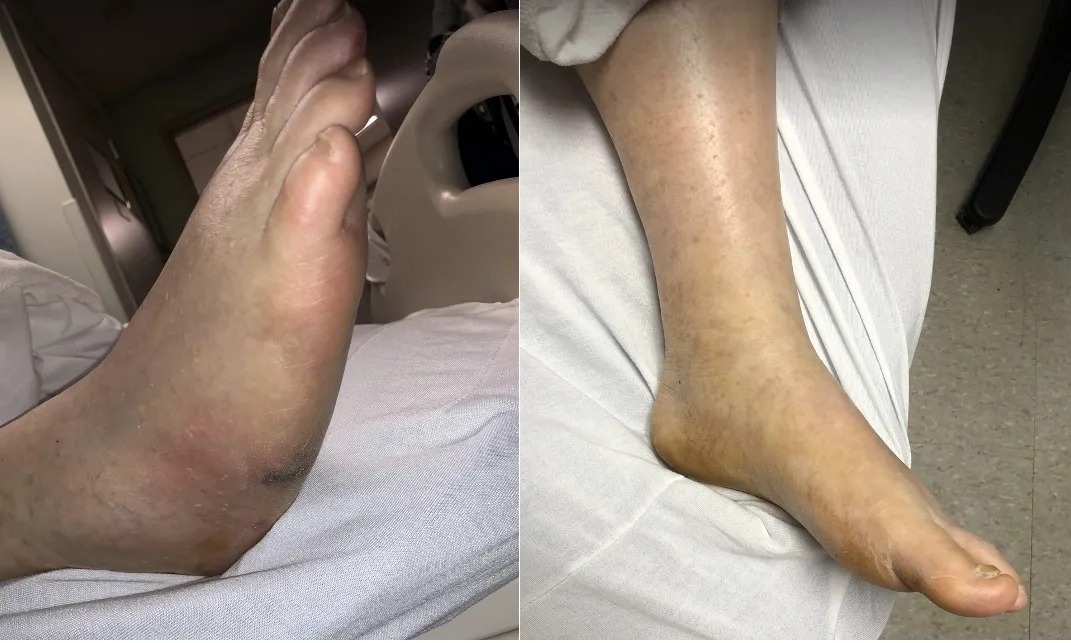
Image Source: WoundSource
Sleeping in chairs creates dangerous pressure points at the time skin contacts the recliner surface. Beds distribute weight evenly across the body, but chairs concentrate pressure on specific areas – we noticed this especially in the lower back, tailbone, and heels [36]. Your skin can suffer from blocked blood flow within just two hours due to this concentrated pressure [9].
How pressure builds in recliner sleep
People who sleep in recliners face unique challenges because these chairs focus pressure on fewer contact points. Most recliners’ seat depth forces improper positioning that creates a gap between the hips and chair back [9]. Many individuals end up sitting directly on their tailbone, which increases pressure on this sensitive area. Note that people with limited mobility cannot reposition easily, which speeds up skin breakdown [36].
Why skin health matters
Your skin needs steady blood flow to get oxygen and nutrients [37]. Skin cells die without everything in these supplies [37]. Patients with thin skin or conditions like diabetes face higher risks [9]. These pressure injuries can develop rapidly – often within hours – and might cause dangerous infections like MRSA [9].
How to avoid pressure sores
Your skin needs protection while sleeping in a chair:
- Change positions at least every two hours [2]
- Choose pressure-relieving cushions made specifically for recliners [9]
- Maintain clean and dry skin with moisture barrier creams as needed [37]
- Drink enough water and eat nutritious foods [37]
- Check your skin daily, particularly over bony areas [37]
Swollen Feet and Ankles
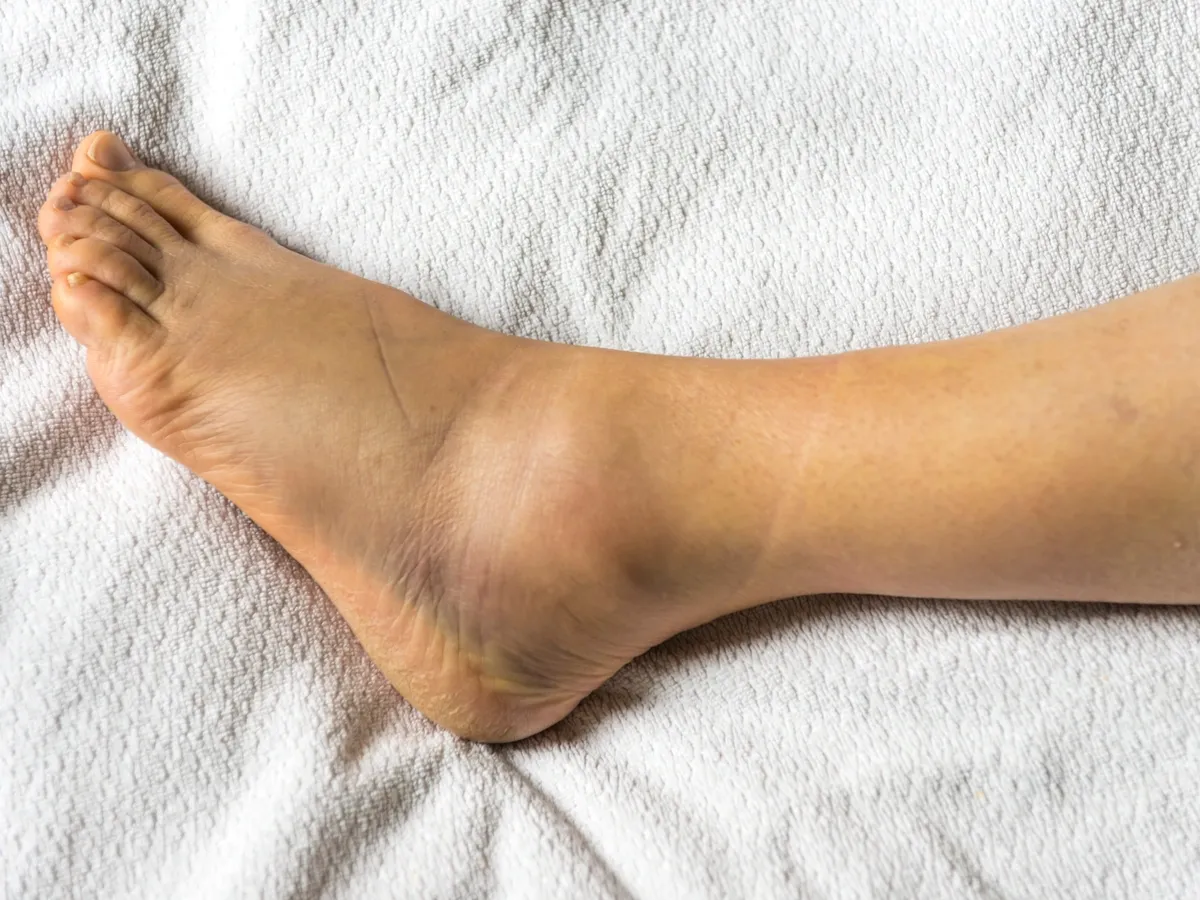
Image Source: Prevention
Sleeping in a chair can make fluid build up in your legs and feet. Your buttocks, thighs, and feet support about 94% of your body weight during sitting. This creates ideal conditions that lead to swelling in your lower legs.
Why sleeping in chair causes swollen feet
The position of your legs during chair sleeping works against healthy blood flow. Blood tends to collect in your lower legs because gravity makes it harder for veins to pump blood back up. Your legs swell up as fluid accumulates [11]. The compressed position restricts your leg muscles from their natural pumping action that helps blood return to your heart [38].
How to improve leg circulation
Here are ways to curb swelling while sleeping in a recliner:
- Raise your legs above heart level as much as possible [10]
- Move around if you wake up at night [38]
- Think about wearing compression stockings before bed [39]
- Drink enough water throughout the day [38]
- Pick recliners that have separate footrests to position your legs better [11]
Best leg positions in recliners
Your legs should rest slightly above heart level with knees gently bent [10]. Dual-motor recliners offer the best solution since you can adjust the footrest without changing how you sit [11]. The footrest needs to support your entire leg while keeping knees slightly bent and thighs fully supported [40]. A soft cushion or special leg pillow can help achieve proper height if your recliner doesn’t go up enough [10].
Dependency and Reduced Mobility
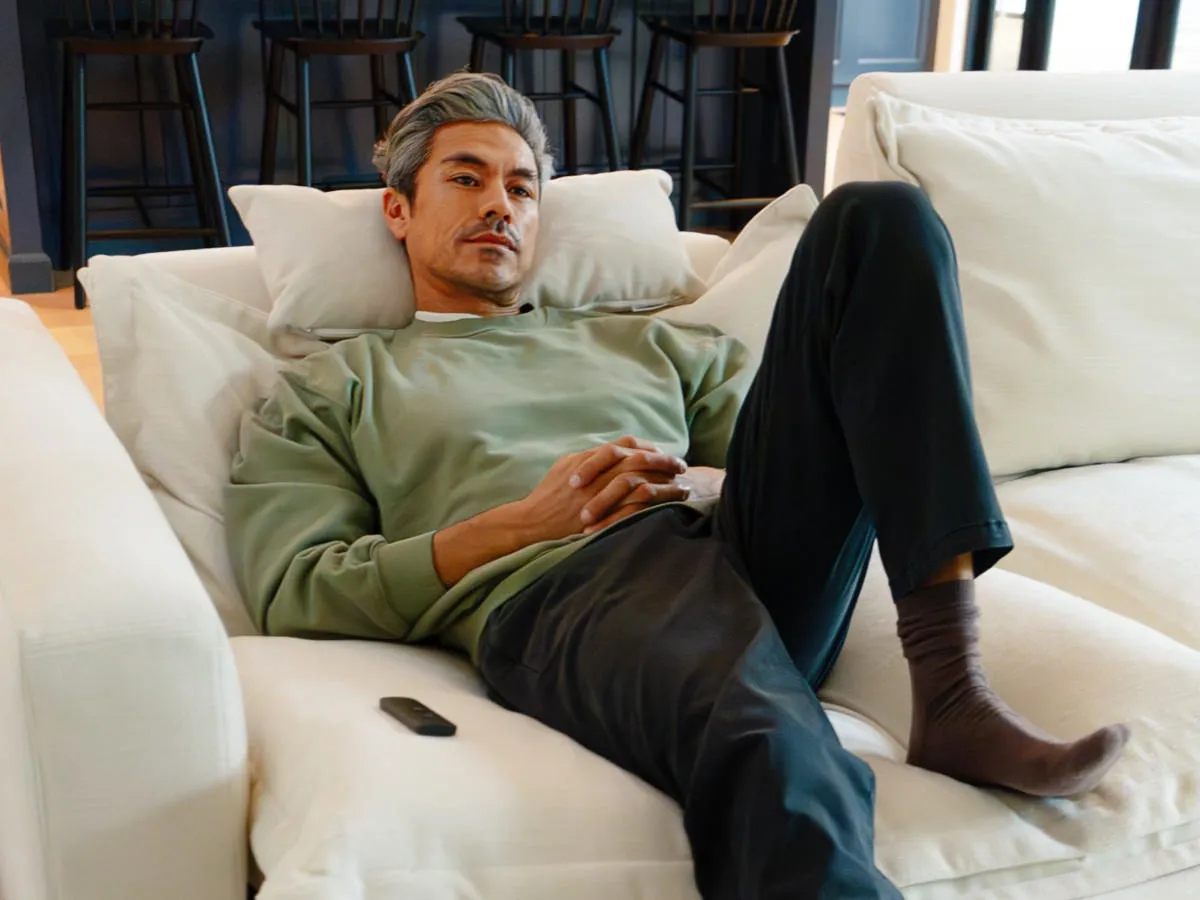
Image Source: Homebody
Sleeping regularly in a chair creates a dangerous cycle that becomes harder to break as time passes. Medical professionals recommend recliner sleep only as a temporary solution and encourage patients to return to bed sleeping when medically feasible [17].
How recliner sleep can reduce mobility
Your body’s range of movement naturally becomes restricted with extended recliner sleep. Beds allow you to reposition your body between side, back, or stomach positions, but recliners force your body into a fixed position [40]. Your muscles can tighten around hip and knee joints and cause muscle contractures [41]. These contractures reduce your ability to walk or stand properly. What starts as a convenient choice ends up limiting your simple movements.
Why movement matters
Joint flexibility and muscle strength depend on regular movement. Limited mobility from long-term chair sleeping affects more than just comfort—it reduces independence. Stiff joints and tight muscles increase your chances of falling [3]. This creates a serious safety risk that grows worse with time, especially for older adults or people with balance problems.
Balancing recliner use with activity
Essential tips for occasional recliner users:
- Move your weight, adjust the recline angle, or reposition your legs to keep muscles active [40]
- Stretch frequently while awake [42]
- Limit your time—use the chair for short naps instead of overnight sleep [43]
Chair-sleep should serve as a temporary fix, not a long-term solution [43].
Psychological Effects of Isolated Sleep
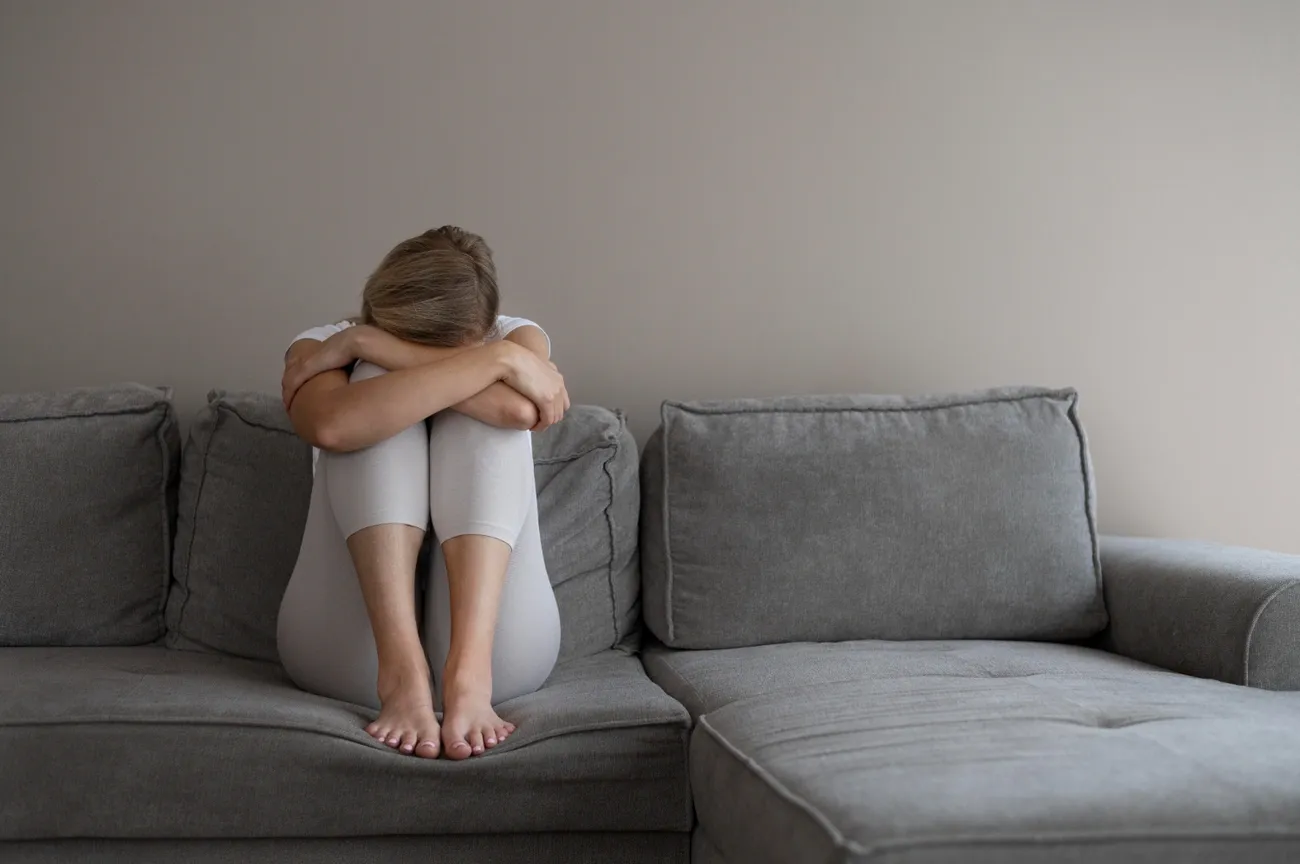
Image Source: Supportive Care
Sleeping in a chair brings psychological challenges beyond just physical discomfort. Research shows people who sleep in chairs might experience emotional disconnection from their family members or partners, which could affect their relationships [8].
How chair sleeping affects mental health
Your natural circadian rhythm can get disrupted when you regularly sleep in a recliner [8]. The body might develop a dependency by associating sleep exclusively with your chair, affecting your overall wellbeing. People living with family members or partners often experience meaningful feelings of isolation when they sleep separately from others in chairs.
Why sleep environment matters
The quality of your sleep depends heavily on your surroundings. Recliners provide a unique psychological advantage through their cushioned sides and enclosed design—a feature that wide, open beds sometimes lack [44]. Your body can settle into sleep more naturally in this snug environment. Quality sleep habits become harder to maintain in common areas, though [8].
Creating a cozy recliner sleep zone
You can improve your psychological comfort by:
- Making your space darker before bed to signal sleep time [44]
- Choosing cozy blankets that keep you comfortable without excess heat [44]
- Removing distractions by keeping the TV quiet or switched off [44]
- Keeping your space cool and peaceful for better sleep [44]
These simple changes to your environment help establish your recliner as your dedicated sleep space [44].
Comparison Table
Sleeping Surfaces and Their Health Effects
| Health Effect Area | Bed | Regular Chair | Sofa | Quality Recliner |
|---|---|---|---|---|
| Blood Circulation | Best – natural blood flow with balanced weight distribution | Poor – high risk of limited circulation from bent knees | Poor – limited movement and uneven weight spread | Moderate – better results than regular chairs at 40° angle |
| Joint & Muscle Health | Best – natural movement and easy position changes | Poor – leads to stiff joints and tight muscles | Fair – some movement but less than beds | Good – works well with proper position and support |
| Spinal Alignment | Best – keeps spine’s natural S-curve | Poor – pushes head forward unnaturally | Poor – lacks proper support | Good – works at 30-45° angle with lumbar support |
| Sleep Quality | Best – supports natural sleep patterns and REM sleep | Poor – breaks sleep patterns and REM cycles | Fair – better than chairs but not ideal | Good – helps with specific issues like acid reflux |
| Breathing & Lung Function | Best – lets chest expand fully | Poor – limits diaphragm movement | Fair – varies by position | Good – works well at 30-60° angle for some conditions |
| Fall Risk | Low – with right height and side rails | High – risk of sliding forward | Moderate – wider but less stable | Low-Moderate – safe when locked properly |
| Long-term Use Safety | Safe for extended use | Not safe for regular sleep | Not safe for regular sleep | Good for specific medical needs |
| Mobility Effect | Helps maintain movement | Can reduce movement ability | May limit movement over time | Moderate effect with proper use |
*Note: A quality recliner means a medical or ergonomic model with good support features, not simple home versions.
Conclusion
Our analysis of these 13 hidden risks shows that sleeping in chairs can harm your health substantially. Beds are the best choice for quality rest. They allow natural movement, proper blood circulation, and help your spine stay properly arranged. In spite of that, recliners set at 30-45 degrees can work as temporary alternatives for specific conditions like acid reflux or sleep apnea.
Sofas provide a middle ground between chairs and recliners. They give better support than regular chairs but fail to arrange your spine and joints properly. The comparison table above shows clear differences between these sleeping surfaces’ health effects.
If you need to sleep in a chair temporarily, proper support cushions are essential. Good positioning, regular movement breaks, and compression socks can help blood flow better. These basic changes can reduce your risk of DVT, joint stiffness, or pressure sores.
Your sleep quality affects every part of your health – from brain function to immune response. This makes your choice of sleeping surface crucial. Chair sleeping might seem convenient at first, but the long-term risks outweigh any short-term comfort. Our other articles are a great way to get more knowledge about creating the best sleep environment for better health.
Research proves that returning to bed sleeping as soon as medically possible is the best approach. Your body needs freedom to move, adjust, and maintain proper arrangement throughout the night. Only a supportive bed can provide this fully. People with specific medical needs should work with their healthcare providers. This helps find the safest sleeping setup and without doubt gives the best results for both comfort now and future wellbeing.
FAQs
Q1. Is sleeping in a recliner safe for everyone? While recliners can be beneficial for certain conditions like acid reflux or sleep apnea, they’re not recommended for regular overnight sleep. Prolonged recliner use can lead to circulation issues, joint stiffness, and reduced mobility. Always consult a healthcare professional before switching to recliner sleeping.
Q2. How does sleeping in a chair affect blood circulation? Sleeping in a chair can restrict blood flow, especially in the legs, due to the bent knee position. This increases the risk of blood clots and swelling in the lower extremities. To improve circulation while using a recliner, try to elevate your legs, take regular breaks to move around, and consider wearing compression socks.
Q3. Can sleeping in a recliner worsen back pain? While some people find temporary relief from back pain in recliners, prolonged use can lead to poor posture and spinal misalignment. Most recliners don’t provide adequate lumbar support, potentially exacerbating existing back issues. If you must sleep in a recliner, use additional lumbar support and ensure proper positioning.
Q4. How does chair sleeping impact sleep quality? Chair sleeping can disrupt natural sleep cycles, particularly REM sleep, due to the upright position and restricted movement. This can lead to fragmented sleep patterns and decreased overall sleep quality. To improve sleep in a recliner, create a sleep-conducive environment with proper lighting, temperature, and minimal distractions.
Q5. Are there any long-term risks associated with regular chair sleeping? Regular chair sleeping can lead to several long-term health risks, including reduced mobility, muscle weakness, increased fall risk, and potential lung function impairment. It may also contribute to the development of pressure sores and skin irritation. To minimize these risks, it’s best to use recliner sleeping as a temporary solution and transition back to bed sleeping when medically possible.
References
[1] – https://www.coonrapidschiropractic.com/article/neck-pain-and-the-recliner-chair/[2] – https://www.hopkinsmedicine.org/health/conditions-and-diseases/bedsores
[3] – https://www.healthline.com/health/healthy-sleep/sleeping-in-a-recliner
[4] – https://transfermaster.com/blog/is-sleeping-in-a-recliner-bad-for-you/
[5] – https://www.sleepfoundation.org/best-pillows/best-wedge-pillow
[6] – https://www.sleepfoundation.org/sleep-apnea/does-sleeping-sitting-upright-help-sleep-apnea
[7] – https://civilizedcaveman.com/health/respiratory-and-sleep-apnea-risks-in-recliner-sleeping/
[8] – https://sihoooffice.com/blogs/insights/chair-sleeping-and-your-health-what-you-need-to-know
[9] – https://m.comfortsbest.com/blog/tips-prevent-heal-bedsore-recliner/
[10] – https://zecliner.com/blogs/news/is-sleeping-in-a-recliner-good-for-me-the-best-sleep-positions-tips
[11] – https://www.vivid.care/insights/advice-tips/best-chairs-for-swollen-feet-and-edema/
[12] – https://stayhomebody.com/blogs/comfy-101/is-it-healthy-to-sleep-in-a-recliner-the-benefits-and-risks?srsltid=AfmBOooyXyxvCI0oQcp1ASEbcKboL9gvdQJjLmgt1dVrYjdSUBs66HI1
[13] – https://amerisleep.com/blog/sleeping-in-a-recliner-chair/?srsltid=AfmBOopbCbvPZWYp8ASYp9iU0n7uxo2ECsM9_z7mdGFnjbMvMWUnqw7c
[14] – https://www.grosvenormobility.co.uk/articles/the-dangers-of-sleeping-in-a-recliner-chair/
[15] – https://www.uprightpose.com/blog/posture-and-sleep/
[16] – https://putnams.co.uk/blogs/news/the-office-chair-might-be-ruining-your-sleep
[17] – https://www.sleepfoundation.org/sleep-hygiene/sleeping-upright
[18] – https://www.duroflexworld.com/blogs/news/can-a-recliner-actually-improve-your-sleep?srsltid=AfmBOoqJEQ2wORIL5O73eUDyKJa4500-NebG9bEMxDCrRoHvYFHm1orv
[19] – https://www.equipmeot.com/how-to-sleep-in-a-recliner/
[20] – https://www.healthline.com/health/neck-pain/waking-up-with-neck-pain
[21] – https://pmc.ncbi.nlm.nih.gov/articles/PMC8706869/
[22] – https://www.sciencedirect.com/science/article/pii/S0003687022001673
[23] – https://www.healthline.com/health/healthy-sleep/how-to-fix-sleep-schedule
[24] – https://www.isleepsolutions.com/blog/how-a-recliner-can-help-with-sleep-apnea/
[25] – https://stayhomebody.com/blogs/comfy-101/is-it-healthy-to-sleep-in-a-recliner-the-benefits-and-risks?srsltid=AfmBOoo88ShailhMlmtthgyUxZhohEKGMa5LFMPcs52m07TdkFTj1K5n
[26] – https://stayhomebody.com/blogs/comfy-101/is-it-healthy-to-sleep-in-a-recliner-the-benefits-and-risks?srsltid=AfmBOorKiSc0O3dAt__d-K1rGXZHeQPfjMH8rmOBRvY3b0QAKpWVl4q7
[27] – https://www.starsleepwellnessfrisco.com/blog/will-sleeping-in-a-recliner-help-with-my-sleep-apnea/
[28] – https://www.weatherfordsleep.com/blog/2023/05/02/your-sleeping-position-can-affect-sleep-apnea/
[29] – https://stayhomebody.com/blogs/comfy-101/is-it-healthy-to-sleep-in-a-recliner-the-benefits-and-risks?srsltid=AfmBOoqGOTSD89veq8Sz-DhYBY5Rgu_YNhjvMIWbXnoSjxDyfALeLl0E
[30] – https://bmcpulmmed.biomedcentral.com/articles/10.1186/s12890-018-0723-4
[31] – https://seatingmatters.com/resources/how-to-reduce-falls-from-chairs
[32] – https://www.fcilondon.co.uk/blog/pros-and-cons-of-sleeping-in-a-recliner/
[33] – https://www.vivid.care/insights/advice-tips/how-to-stop-someone-from-falling-out-of-a-chair/
[34] – https://mobilityfurniturecompany.co.uk/blog/caring/elderly-sliding-out-of-chair/
[35] – https://cityfurnish.com/blog/is-it-ok-for-an-elderly-person-to-sleep-in-a-recliner?srsltid=AfmBOopV24QCw8LWuo0ZFOjuydvKg997ICAuHj4Fp0B7enMfgT6fPJ3E
[36] – https://www.adjustamatic.co.uk/help-advice/is-it-bad-to-sleep-in-a-riser-recliner-chair/
[37] – https://www.mayoclinic.org/diseases-conditions/bed-sores/symptoms-causes/syc-20355893
[38] – https://www.healthline.com/health/foot-leg-and-ankle-swelling
[39] – https://myhealth.alberta.ca/Health/aftercareinformation/pages/conditions.aspx?hwid=uh3154
[40] – https://zecliner.com/blogs/news/sleeping-in-a-recliner-an-expert-guide-to-sleeper-chairs-zecliner
[41] – https://www.vivid.care/insights/advice-tips/sleeping-in-a-chair-good-or-bad-for-you/
[42] – https://operabeds.com/blogs/knowledge-hub/is-sleeping-in-a-riser-recliner-chair-a-good-idea
[43] – https://vaseat.com/sleep-in-a-chair/
[44] – https://zecliner.com/blogs/news/why-do-i-sleep-better-in-my-recliner-than-my-bed-zecliner